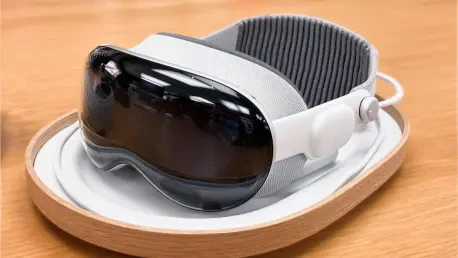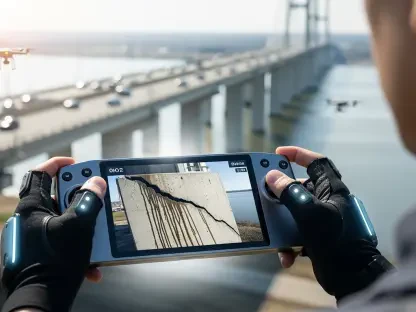As the tech landscape continues to evolve at a breakneck pace, Apple stands at a pivotal crossroads with its mixed-reality and wearable technology offerings, sparking intense curiosity about whether the upcoming Vision Pro 2 can hold its ground against the emerging wave of AI-powered smart glasses. The original Vision Pro headset, priced at a staggering $3,499, has been both a technological marvel and a market challenge, grappling with limited mainstream appeal due to its cost and cumbersome design. Meanwhile, whispers of Apple’s strategic pivot toward lightweight, AI-driven smart glasses have ignited debates about the future of personal tech. With the Vision Pro 2 slated for an incremental update and smart glasses on the horizon, the question looms large: will Apple’s headset refresh maintain its edge, or will the allure of innovative, accessible wearables steal the spotlight? This exploration delves into the latest developments, market dynamics, and strategic shifts shaping Apple’s journey in this competitive arena.
Evolving Strategy for Mixed-Reality Headsets
Apple’s decision to continue developing the Vision Pro 2, despite shelving a more affordable version codenamed N100, reflects a calculated approach to sustaining its foothold in the mixed-reality space. The Vision Pro 2 is expected to closely mirror the design of its predecessor, maintaining a familiar form factor for early adopters while introducing a more powerful chipset to enhance performance. This incremental update signals Apple’s intent to support its existing user base without alienating those who invested heavily in the original model. However, the high price point and weight concerns that plagued the first iteration remain unaddressed, potentially limiting its appeal to a niche audience. The focus on refinement rather than revolution suggests a pragmatic stance, prioritizing stability over radical redesigns in a market still finding its footing. As competitors explore diverse form factors, Apple’s commitment to the headset format raises questions about its adaptability to broader consumer demands in an increasingly crowded field.
The cancellation of the N100 project, which aimed to deliver a lighter and cheaper alternative, underscores the challenges of balancing innovation with accessibility in mixed-reality technology. Market feedback on the original Vision Pro highlighted its prohibitive cost and lack of practicality for everyday use, prompting speculation that a budget-friendly model could have expanded Apple’s reach. Yet, diverting resources away from a compromised mid-tier solution indicates a preference for long-term vision over short-term gains. Instead of diluting the premium branding associated with the Vision Pro line, Apple appears to be preserving its high-end positioning while redirecting efforts toward a different frontier. This strategic retreat from affordability in headsets reveals a nuanced understanding of market limitations, acknowledging that mass adoption may not yet be feasible for such devices. The move sets the stage for a bolder pivot, as Apple reallocates its focus to emerging technologies that promise greater alignment with consumer preferences.
The Rise of AI-Driven Smart Glasses
In a striking shift, Apple is accelerating the development of AI-powered smart glasses, positioning itself to compete in a segment where lightweight, practical wearables are gaining traction. Two distinct models are reportedly in the pipeline: the Companion Model, known internally as N50, which lacks a built-in display and relies on an iPhone for processing, and a more advanced Display Model featuring integrated lens displays for augmented reality experiences. The Companion Model could potentially launch around 2027, while efforts are underway to fast-track the Display Model to keep pace with rivals already making waves in this space. This pivot reflects a growing consensus that bulky headsets struggle with mass appeal, whereas smart glasses offer a less intrusive, more socially acceptable alternative. Apple’s redirection of resources from the affordable headset to these projects highlights a belief in AI and augmented reality as the future of personal tech integration.
Consumer trends further validate Apple’s focus on smart glasses, as evidenced by the success of competitors’ lightweight offerings like Meta’s Ray-Ban collaboration, which have resonated with users seeking seamless, everyday functionality. Unlike headsets that often feel isolating or impractical, smart glasses blend into daily life, offering hands-free access to information and AI-driven features without the burden of excessive hardware. Apple’s strategic emphasis on this form factor suggests an intent to redefine how technology interacts with human behavior, prioritizing convenience and accessibility over immersive but niche experiences. While the Vision Pro 2 may cater to enthusiasts and professionals, smart glasses hold the promise of capturing a broader audience, potentially transforming mundane tasks with contextual intelligence. This shift not only aligns with market demand but also positions Apple to challenge competitors who have already established a foothold in the wearable AI arena.
Navigating Future Tech Horizons
Reflecting on Apple’s journey, the tech giant has demonstrated adaptability by balancing incremental updates to the Vision Pro 2 with a bold pivot toward AI smart glasses, ensuring it neither abandons early adopters nor ignores emerging trends. The decision to shelve a cheaper headset model in favor of long-term innovation marked a critical turning point, acknowledging the limitations of current mixed-reality formats. As the industry evolves, Apple’s dual strategy caters to distinct user needs while laying the groundwork for future dominance. Moving forward, stakeholders should monitor how the Vision Pro 2’s enhancements resonate with its niche market, while anticipating the transformative potential of smart glasses slated for release in the coming years. Industry observers might also consider how Apple’s AI integration could set new benchmarks for wearable tech, urging competitors to elevate their offerings. Ultimately, staying attuned to consumer feedback and technological advancements will be key to predicting which innovation truly captures the imagination of tomorrow’s users.









